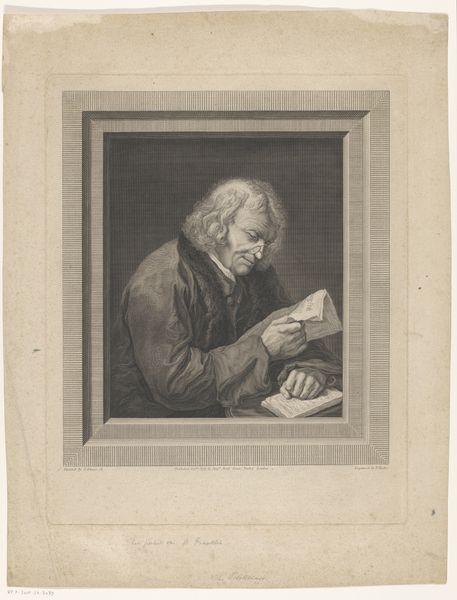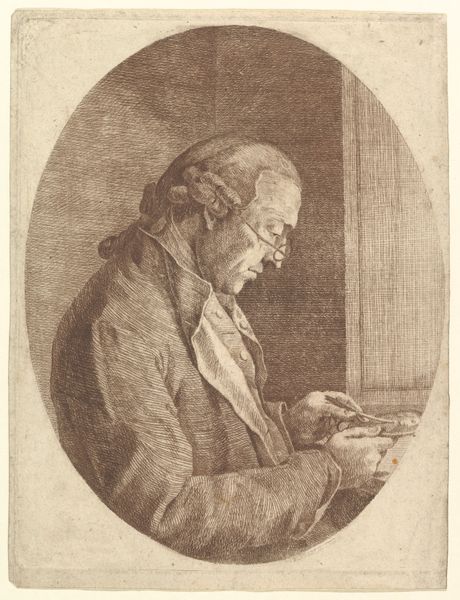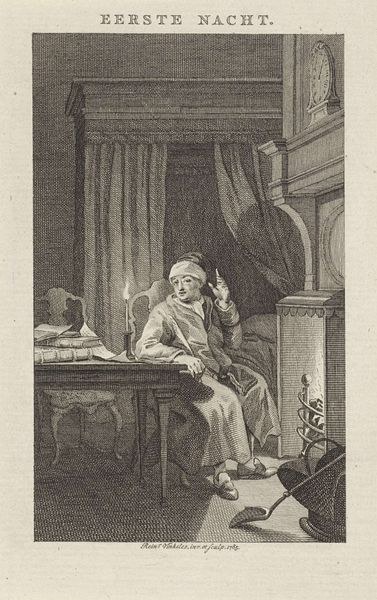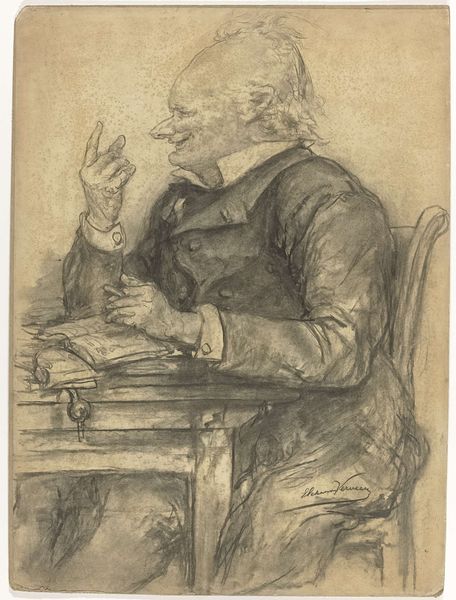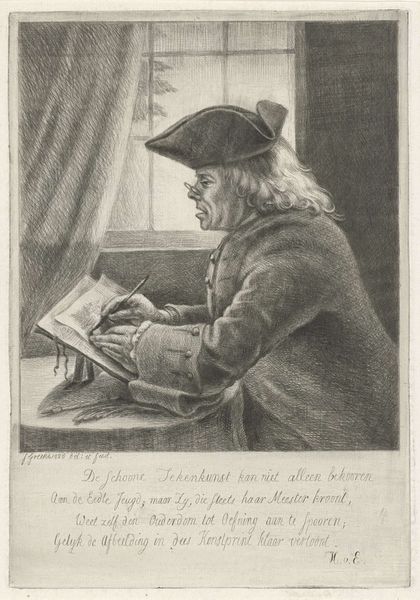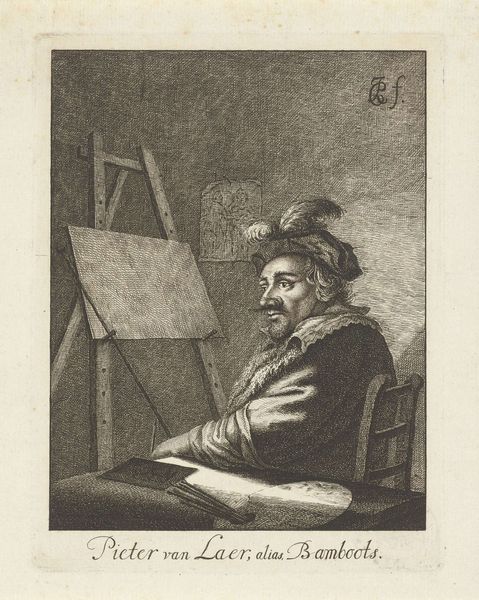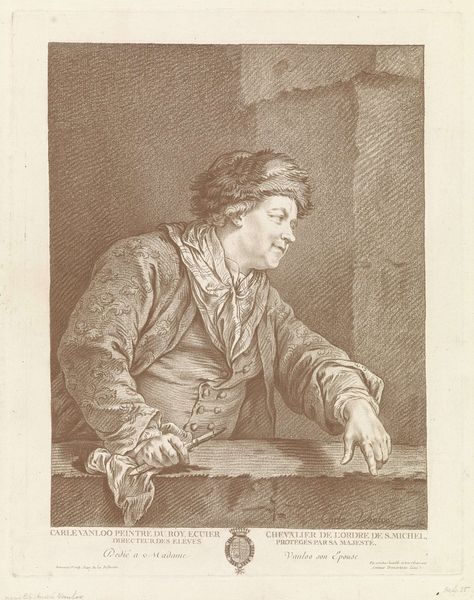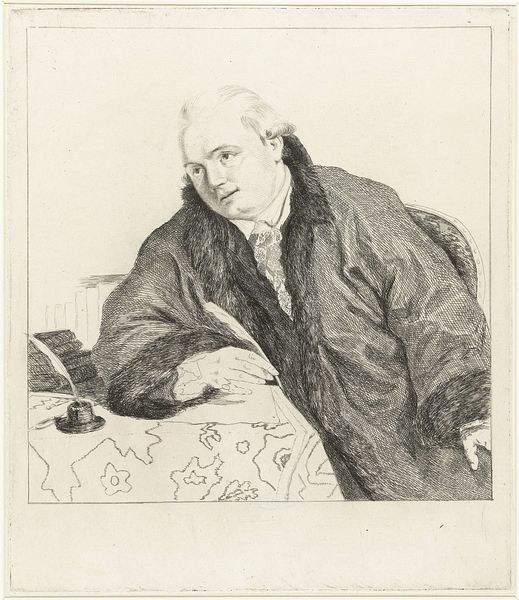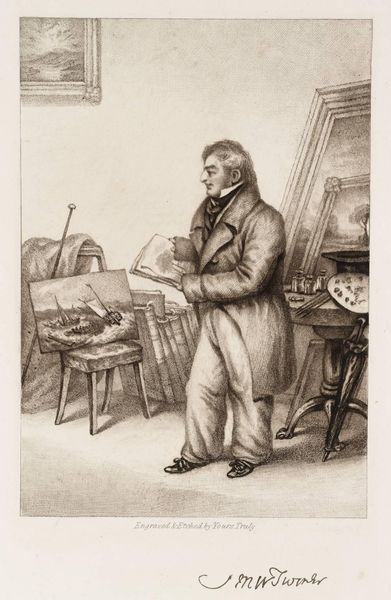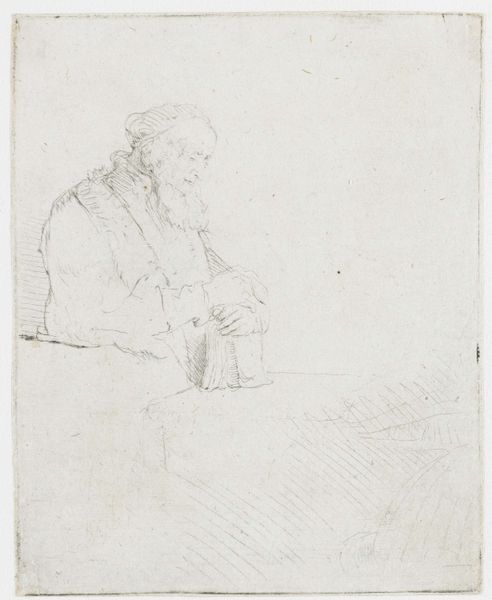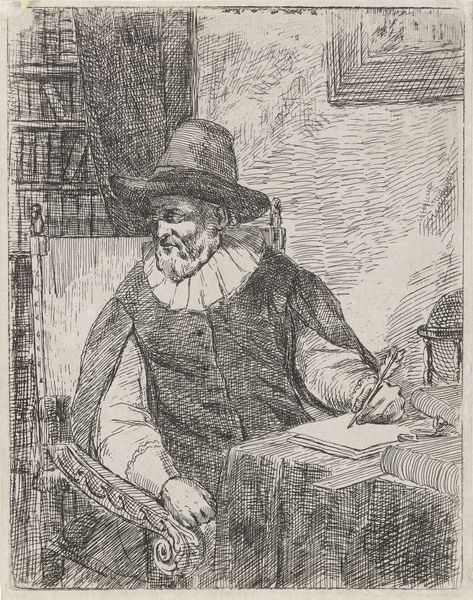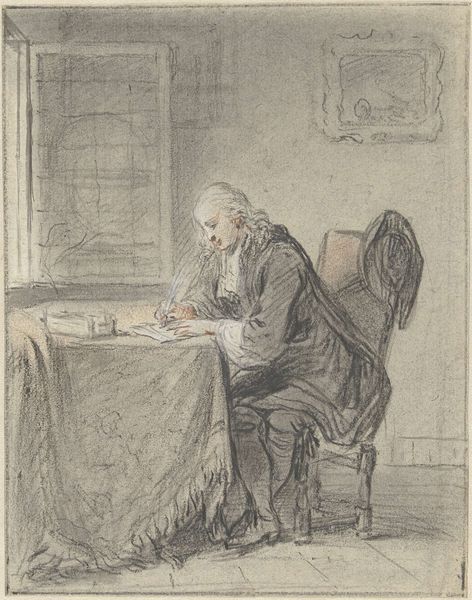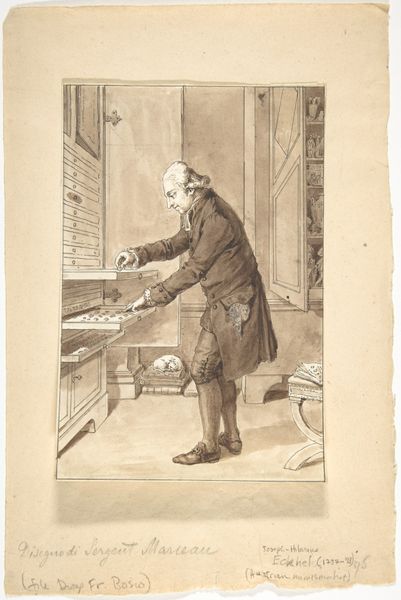
drawing, paper, ink
#
portrait
#
drawing
#
neoclacissism
#
pencil sketch
#
charcoal drawing
#
paper
#
ink
#
pencil drawing
#
portrait drawing
#
watercolour illustration
#
genre-painting
Dimensions: height 326 mm, width 254 mm
Copyright: Rijks Museum: Open Domain
Editor: Here we have Abraham van Strij's "Portrait of an Old Man in a Study," created sometime between 1763 and 1826, rendered in ink on paper. It feels very introspective. What do you see in this drawing? Curator: This piece presents a compelling image of intellectual life during a period of significant social and political upheaval. Note how the trappings of scholarship - the books, the skeletal remains - are all centered around this lone figure. I wonder how Van Strij positions the intellectual relative to the turbulent outside world? Editor: So, you're saying the setting is as important as the subject? Curator: Precisely. Think about who had access to such scholarly pursuits. Was it merely about portraying an individual, or about commenting on a privileged class, engrossed in their studies while societal shifts occurred around them? The old man's introspective gaze invites questions about knowledge, power, and social responsibility. What kind of questions does it raise for you? Editor: It makes me think about the accessibility of knowledge then, and even now. Who gets to write history, and whose stories are left out? Curator: Exactly. The artist's choice of a 'genre-painting' style, combined with the portrait, creates a fascinating tension. It's not simply a record of a person, but an entry point into a wider discussion. How can we use this image to consider our relationship with the past? Editor: I never thought about a portrait carrying so much historical weight, but now I see how it can. Thanks for broadening my perspective! Curator: And thank you for highlighting its continued relevance. It's through these dialogues that art history can truly come alive, encouraging critical reflection.
Comments
No comments
Be the first to comment and join the conversation on the ultimate creative platform.
